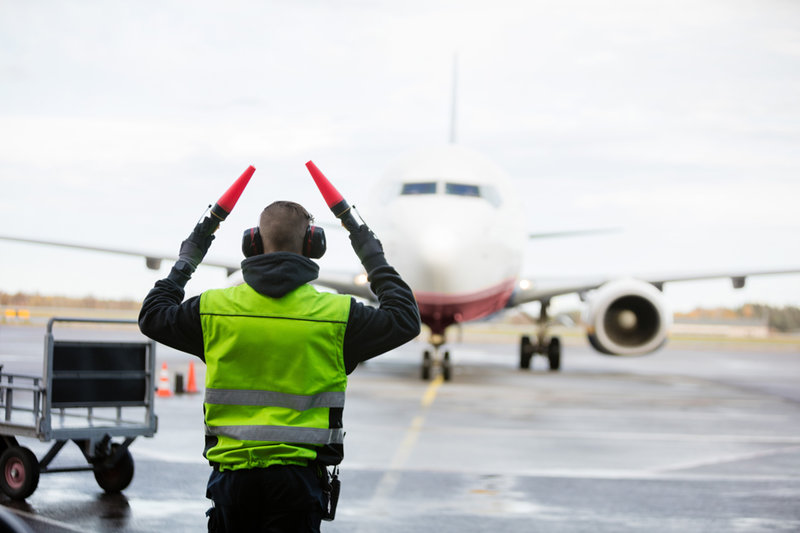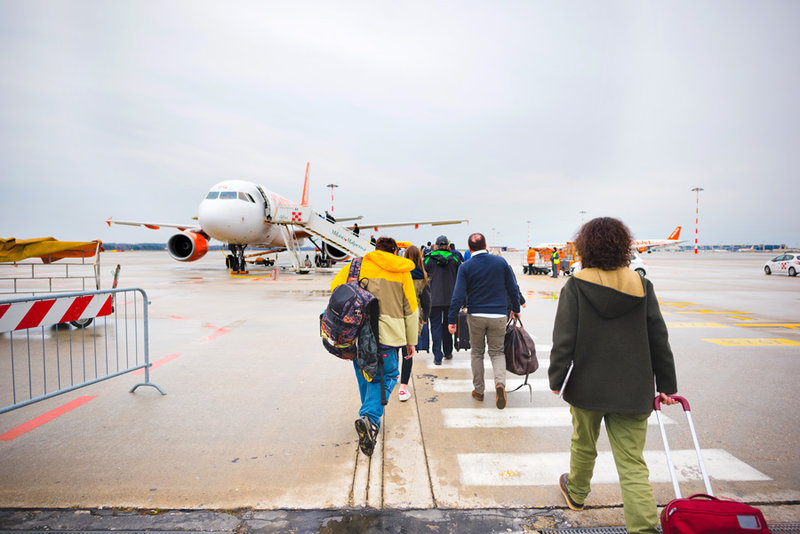Regulation
An urgent call to optimise European airspace
The
future
of US air
traffic control:
the third option?
European airlines have called on the EU to radically reform air space architecture and unlock more efficient routes. A declaration signed by A4E, airlines, partner associations and Eurocontrol argues that doing so would deliver faster routes, improve punctuality and cut CO2 emissions. But what needs to happen for this to become a reality? Patrick Kingsland explores the options
It was the nightmare scenario that many airlines had seen coming but few policymakers in Europe were willing to do anything to avoid. During the busiest month of last year’s summer period, the number of en-route delays facing EU passengers increased by a staggering 150% on the year before.
In total, passengers experienced 10.6 million minutes of delays during June, July and August 2018 – the equivalent of over 20 years collectively, according to Airlines for Europe (A4E), a trade association that represents 15 leading airline groups.
“This past summer was the worst in nearly a decade,” says Jennifer Janzen, A4E communications director. “And the prognosis for the next, upcoming summer is even worse.”
Image courtesy of
Sovereignty struggles
The delays underscored the huge challenge now facing Europe’s aviation sector: that while air traffic is increasing (up 4% last summer) as it becomes cheaper and easier to fly than ever before, the continent’s air traffic management system can no longer accommodate the demand.
The key factor explaining this inefficiency, according to A4E, is different countries wanting to maintain sovereignty. Unlike the US, where a single airspace is managed by a single provider, in Europe there are around 30 different air traffic control centres, with each country managing its own airspace.

Image courtesy of
For years the European Commission promised to implement a ‘Single European Sky’ designed to manage and regulate airspace in a more efficient manner, but with member states following their own political agendas, the proposals lacked support and never truly materialised.
“The sovereignty issue has played a leading role in the fact that the Single European Sky has not been able to happen,” says Janzen. “Countries do not want to give up their sovereignty. They don't want to allow their airspace to be controlled by anybody other than themselves.”
Eero Knuutila is Head of Service Development at Helsinki Airport.
Image courtesy: Helsinki Airport
Countries do not want to give up their sovereignty
Strikes and staff shortages
A shortage of air traffic controllers and regular strikes are also contributing to the problem, airlines say. Last year Ryanair took to Twitter, claiming “French, German, Spanish and UK ATC staff shortages caused delays to over 1,000 flights”. The UK’s national air traffic control provider, NATS, rejected the criticism.
Since 2005 the European Union (EU) has experienced 357 air traffic control strikes, according to data from the European Commission. Between 2010 and 2017 the economic impact of these strikes stood at a staggering €13.4bn, a study by PriceWaterhouseCoopers found.

Image courtesy of
“We simply do not have enough ATC staff,” argues Janzen. “Controllers take several years to be trained and having one ATC centre trained to take over controlling flights from a different centre from a bordering country can take months. You also have a lot of issues with regards to holidays. Everybody likes to take their holidays in Europe in the summer, which for airlines is of course peak season.”
To avoid a repeat of last summer’s misery, the chief operating officers of Europe’s leading airlines got together last November with partner associations and Eurocontrol in Brussels to call on the EU to tackle the problems affecting the continent’s air space. The message they put forward was clear, says Janzen.
“We agreed that now is the time to act,” she says. “We cannot afford to have a repeat of last summer.”
We cannot afford to have a repeat of last summer
A three-tiered solution
As part of a three-tiered strategy, A4E has put forward a number of short-term measures designed to get the situation under control for passengers. It wants as many people as possible to sign an ‘Efficient Airspace’ declaration agreed last November and ensure that Europe’s air traffic management (ATM) system remains a top political priority both at a national and EU level. Airlines are already doing their bit by employing additional staff to work in their operation control centres to try and manage the situation better.
“We need a fresh, collaborative approach where everyone commits to working collaboratively, putting their differences aside and delivering,” says Janzen.
In the medium stage, from 2019-25, A4E is advocating for new Single European Sky ATM Research (SESAR) technologies to be introduced to help reduce air traffic controller workloads, improve productivity and safely increase capacity. More significantly, it wants to integrate national airspace into a single continuum it calls the “Seamless European Sky”.

Image: Eugenio Marongiu / Shutterstock.com
“The Single European Sky is a term that is not very highly regarded here in Brussels because it just never happened,” Janzen explains. “We thought that in order to inject some enthusiasm and motivation we should give it a new name and call it what it really is: a seamless sky. It is a section of airspace which essentially crosses national boundaries, a single continuum that still allows the countries to safeguard their national sovereignty.”
In the long term, from 2035 onwards, A4E’s plan involves future-proofing Europe’s air traffic management system by calling for “collaborative and network-focused planning processes” that create the most efficient daily operations, while also ensuring digitalisation and automation are on par with other industries, and flight trajectories are based on sustainable routes that get from A to B with the lowest emissions possible.
Put together, these plans might sound ambitious, but for Janzen a critical mass is already being built among consumers, cargo shippers and airline operators affected by the constant delays. In Brussels, she says the tone among EU officials is now shifting, with politicians increasingly aware of the issue and the need to finally take action.
“We feel like we have momentum on our side,” Janzen says. “We have established the fact that implementing the Seamless European Sky in the future is no longer a wish, it is a necessity.”
Eero Knuutila is Head of Service Development at Helsinki Airport.
Image courtesy: Helsinki Airport
We need a fresh, collaborative approach where everyone commits to putting their differences aside and delivering